Materia orgánica disuelta (DOM) como agente de seguimiento natural en estimulación cíclica por vapor usando espumas preformadas: un caso de campo de petróleo pesado maduro
Resumen
En el presente trabajo se analizó la fracción soluble no volátil en agua o materia orgánica disuelta (DOM) obtenida del agua de producción asociada a la Estimulación Cíclica por Vapor (CSS) con espumas preformadas mediante espectrometría de masas de alta y ultra-alta. Utilizando ESI FT-ICR MS, se identificaron y seleccionaron seis ácidos nafténicos como nuevos posibles agentes de seguimiento naturales. Posteriormente, las fracciones de DOM se analizaron mediante ESI MSMS, y se establecieron concentraciones semicuantitativas de estos compuestos para las muestras. Los resultados muestran que la concentración de DOM monitoreada a través de ESI-MSMS permite correlacionar los cambios durante los ciclos de inyección de vapor+espuma con los aumentos/disminuciones de la producción de petróleo en tres pozos del Campo Cocorná, Colombia. Esta información se vuelve relevante para el control de calidad de la inyección cíclica de vapor y, por tanto, para el desarrollo de campos maduros de petróleo pesado.
De esta manera, monitorear compuestos de petróleo solubles en agua se presenta como una estrategia asequible y una herramienta prometedora para seguir cambios en yacimientos sometidos a inyección de agua.
Referencias bibliográficas
Aeppli, C., Carmichael, C. A., Nelson, R. K., Lemkau, K. L., Graham, W. M., Redmond, M. C., ... & Reddy, C. M. (2012). Oil weathering after the Deepwater Horizon disaster led to the formation of oxygenated residues. Environmental science & technology, 46(16), 8799-8807. https://doi.org/10.1021/es3015138
Ajaero, C., Vander Meulen, I., Heshka, N. E., Xin, Q., McMartin, D. W., Peru, K. M., ... & Headley, J. V. (2024). Evaluations of Weathering of Polar and Nonpolar Petroleum Components in a Simulated Freshwater–Oil Spill by Orbitrap and Fourier Transform Ion Cyclotron Resonance Mass Spectrometry. Energy & Fuels, 38(8), 6753-6763. https://doi.org/10.1021/acs.energyfuels.3c04994
Bertheussen, A., Simon, S., & Sjöblom, J. (2018). Equilibrium partitioning of naphthenic acid mixture Part 2: crude oil-extracted naphthenic acids. Energy & Fuels, 32(9), 9142-9158. https://doi.org/10.1021/acs.energyfuels.8b01870
Brown, T. L., & Rice, J. A. (2000). Effect of experimental parameters on the ESI FT-ICR mass spectrum of fulvic acid. Analytical Chemistry, 72(2), 384-390. https://doi.org/10.1021/ac9902087
Derenne, S., & Tu, T. T. N. (2014). Characterizing the molecular structure of organic matter from natural environments: An analytical challenge. Comptes Rendus Geoscience, 346(3-4), 53-63. https://doi.org/10.1016/j.crte.2014.02.005
Dittmar, T., Koch, B., Hertkorn, N., & Kattner, G. (2008). A simple and efficient method for the solid‐phase extraction of dissolved organic matter (SPE‐DOM) from seawater. Limnology and Oceanography: Methods, 6(6), 230-235. https://doi.org/10.4319/lom.2008.6.230
Ghassal, B. I. (2019). Reservoir connectivity, water washing and oil to oil correlation: An integrated geochemical & petroleum engineering approach. SPE Middle East Oil and Gas Show and Conference, MEOS, Proceedings, 2019-March. https://doi.org/10.2118/194957-MS
Leenheer, Gonsior, M., Zwartjes, M., Cooper, W. J., Song, W., Ishida, K. P., Tseng, L. Y., ... & Schmitt-Kopplin, P. (2011). Molecular characterization of effluent organic matter identified by ultrahigh resolution mass spectrometry. Water research, 45(9), 2943-2953. https://doi.org/10.1016/j.watres.2011.03.016
Hatcher, P. G., Dria, K. J., Kim, S., & Frazier, S. W. (2001). Modern analytical studies of humic substances. Soil Science, 166(11), 770–794. https://doi.org/10.1097/00010694-200111000-00005
Hindle, R., Noestheden, M., Peru, K., & Headley, J. (2013). Quantitative analysis of naphthenic acids in water by liquid chromatography-accurate mass time-of-flight mass spectrometry. Journal of Chromatography A, 1286, 166–174. https://doi.org/10.1016/j.chroma.2013.02.082
Jones, D. M., Watson, J. S., Meredith, W., Chen, M., & Bennett, B. (2001). Determination of naphthenic acids in crude oils using nonaqueous ion exchange solid-phase extraction. Analytical Chemistry, 73(3), 703-707. https://doi.org/10.1021/ac000621a
Leenheer, J. A., & Croué, J. P. (2003). Peer reviewed: characterizing aquatic dissolved organic matter. Environmental science & technology, 37(1), 18A-26A. https://doi.org/10.1021/es032333c
Leenheer, J. A., & Croué, J. P. (2003). Peer reviewed: characterizing aquatic dissolved organic matter. Environmental science & technology, 37(1), 18A-26A. https://doi.org/10.1021/es032333c
Liu, Y., & Kujawinski, E. B. (2015). Chemical composition and potential environmental impacts of water-soluble polar crude oil components inferred from ESI FT-ICR MS. PloS one, 10(9), e0136376. https://doi.org/10.1371/journal.pone.0136376
Maddinelli, G., Bartosek, M., Bonoldi, L., Moghadasi, L., Renna, D., & Moscatelli, D. (2022, October). Parameter Sensitive Inter-Well Tracers to Map Reservoir Conditions. In Abu Dhabi International Petroleum Exhibition and Conference (p. D012S140R002). SPE. https://doi.org/10.2118/211220-MS
McCormack, P., Jones, P., Hetheridge, M. J., & Rowland, S. J. (2001). Analysis of oilfield produced waters and production chemicals by electrospray ionisation multi-stage mass spectrometry (ESI-MSn). Water research, 35(15), 3567-3578. https://doi.org/10.1016/S0043-1354(01)00070-7
Osma, L., García, L., Pérez, R., Barbosa, C., Botett, J., Sandoval, J., & Manrique, E. (2019). Benefit–cost and energy efficiency index to support the screening of hybrid cyclic steam stimulation methods. Energies, 12(24), 4631. https://doi.org/10.3390/en12244631
Pérez, R. A., Rodréguez, H. A., Rendón, G. J., Plata, B. G., Salinas, L. M., Barbosa, C., ... & Manrique, E. J. (2022, April). Optimizing Production Performance, Energy Efficiency and Carbon Intensity with Preformed Foams in Cyclic Steam Stimulation in a Mature Heavy Oil Field: Pilot Results and Development Plans. In SPE Improved Oil Recovery Conference? (p. D011S011R002). SPE. https://doi.org/10.2118/209399-MS
Perez, R. A., Rodriguez, H. A., Romero, J. E., Alvarez, J. S., Hernandez, S., Luque, I., ... & Manrique, E. (2023, June). Incorporating Hybrid Technology of CSS+ Foam in Heavy Oil Field Development Plans: Practical Experiences and Lessons Learned. In SPE Latin America and Caribbean Petroleum Engineering Conference (p. D021S009R001). SPE. https://doi.org/10.2118/213199-MS
Perez, R., Rodriguez, H., Barbosa, C., Manrique, E., Garcia, L., & Rendon, G. (2020, July). Improving CSS Performance with Preformed Foam: Teca-Cocorna Field Case. In SPE Latin America and Caribbean Petroleum Engineering Conference (p. D011S002R001). SPE. https://doi.org/10.2118/199104-MS
Pérez-Romero, R. A., García-Duarte, H. A., Osma-Marín, L. Y., Barbosa-Goldstein, C., Garcia-Rodriguez, L. E., Botett-Cervantes, J. A., ... & Manrique-Ventura, E. J. (2020). Downhole heating and hybrid cyclic steam methods: Evaluating technologies from the laboratory to the field. CT&F-Ciencia, Tecnología y Futuro, 10(2), 49-60. https://doi.org/10.29047/01225383.257
Reyes, T. G., & Crisosto, J. M. (2016). Characterization of dissolved organic matter in river water by conventional methods and direct sample analysis‐time of flight‐mass spectrometry. Journal of Chemistry, 2016(1), 1537370. https://doi.org/10.1155/2016/1537370
Rowland, S. J., Scarlett, A. G., Jones, D., West, C. E., & Frank, R. A. (2011). Diamonds in the rough: identification of individual naphthenic acids in oil sands process water. Environmental Science & Technology, 45(7), 3154-3159. https://doi.org/10.1021/es103721b
Rudzinski, W. E., Oehlers, L., Zhang, Y., & Najera, B. (2002). Tandem mass spectrometric characterization of commercial naphthenic acids and a Maya crude oil. Energy & Fuels, 16(5), 1178-1185. https://doi.org/10.1021/ef020013t
Sequera-Dalton, B. M., Gutiérrez, D., Moore, R. G., Mehta, S. A., Ursenbach, M. G., García, H. A., ... & Manrique, E. J. (2024, March). New Insights From an Old Method After History Matching a Newly Designed 1-D Cyclic Steam Stimulation Experiment. In SPE Canadian Energy Technology Conference (p. D011S001R001). SPE. https://doi.org/10.2118/218041-MS
Villabona-Estupiñan, S., Rojas-Ruiz, F. A., Pinto-Camargo, J. L., Manrique, E. J., & Orrego-Ruiz, J. A. (2020). Characterization of Petroleum Compounds Adsorbed on Solids by Infrared Spectroscopy and Mass Spectrometry. Energy & Fuels, 34(5), 5317-5330. https://doi.org/10.1021/acs.energyfuels.9b03564
Shang, D., Kim, M., Haberl, M., & Legzdins, A. (2013). Development of a rapid liquid chromatography tandem mass spectrometry method for screening of trace naphthenic acids in aqueous environments. Journal of Chromatography A, 1278, 98–107. https://doi.org/10.1016/j.chroma.2012.12.078
Sleighter, R. L., & Hatcher, P. G. (2007). The application of electrospray ionization coupled to ultrahigh resolution mass spectrometry for the molecular characterization of natural organic matter. Journal of Mass Spectrometry, 42(5), 559–574. https://doi.org/10.1002/jms.1221
Sørensen, L., Størseth, T. R., Altin, D., Nordtug, T., Faksness, L. G., & Hansen, B. H. (2024). A simple protocol for estimating the acute toxicity of unresolved polar compounds from field-weathered oils. Toxicology Mechanisms and Methods, 34(3), 245–255. https://doi.org/10.1080/15376516.2024.2310003
Stanford, L.A., Kim, S., Klein, G.C., Smith, D.F., Rodgers, R.P. and Marshall, A. G. (2007). Identification of Water-Soluble Heavy Crude Oil Organic-Acids, Bases, and Neutrals by Electrospray Ionization and Field Desorption Ionization Fourier Transform Ion Cyclotron Resonance Mass Spectrometry. Environmental Science and Technology, 41, 2696–2702. https://doi.org/10.1021/es0624063
Thomas, K. V., Langford, K., Petersen, K., Smith, A. J., & Tollefsen, K. E. (2009). Effect-directed identification of naphthenic acids as important in vitro xeno-estrogens and anti-androgens in North Sea offshore produced water discharges. Environmental Science and Technology, 43(21), 8066–8071. https://doi.org/10.1021/es9014212
Venancio, F., Oliveira, A., Silva, S. C., Kina, A. Y., & Mutch, K. (2024, March). Evaluating New Chemical Treatments to Decrease Water Soluble Organic (WSO) Content from Produced Water Discharge. In SPE Water Lifecycle Management Conference and Exhibition (p. D011S005R003). SPE. https://doi.org/10.2118/218979-MS
Wang, G., Xue, Y., Wang, D., Shi, S., Grice, K., & Greenwood, P. F. (2016). Biodegradation and water washing within a series of petroleum reservoirs of the Panyu Oil Field. Organic Geochemistry, 96, 65-76. https://doi.org/10.1016/j.orggeochem.2016.03.009
Yildiz, H. O., & Morrow, N. R. (1996). Effect of brine composition on recovery of Moutray crude oil by waterflooding. Journal of Petroleum science and Engineering, 14(3-4), 159-168. https://doi.org/10.1016/0920-4105(95)00041-0
Zheng, F., Shi, Q., Vallverdu, G. S., Giusti, P., & Bouyssiere, B. (2020). Fractionation and characterization of petroleum asphaltene: focus on metalopetroleomics. Processes, 8(11), 1504. https://doi.org/10.3390/pr8111504
Zito, P., Ghannam, R., Bekins, B. A., & Podgorski, D. C. (2019). Examining the extraction efficiency of petroleum‐derived dissolved organic matter in contaminated groundwater plumes. Groundwater Monitoring & Remediation, 39(4), 25-31. https://doi.org/10.1111/gwmr.12349
Descargas
Derechos de autor 2024 CT&F - Ciencia, Tecnología y Futuro

Esta obra está bajo una licencia internacional Creative Commons Atribución-NoComercial-CompartirIgual 4.0.

| Estadísticas de artículo | |
|---|---|
| Vistas de resúmenes | |
| Vistas de PDF | |
| Descargas de PDF | |
| Vistas de HTML | |
| Otras vistas | |











